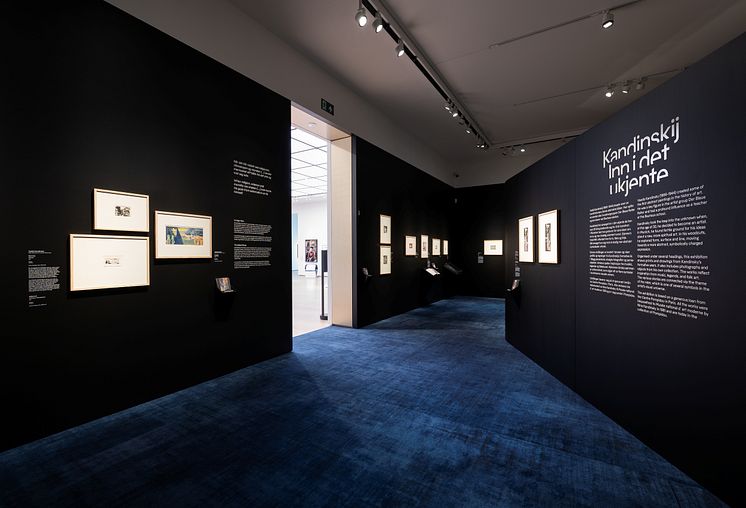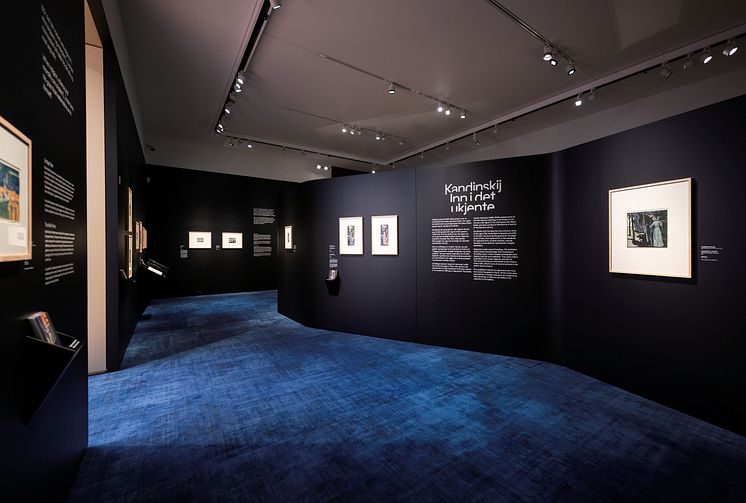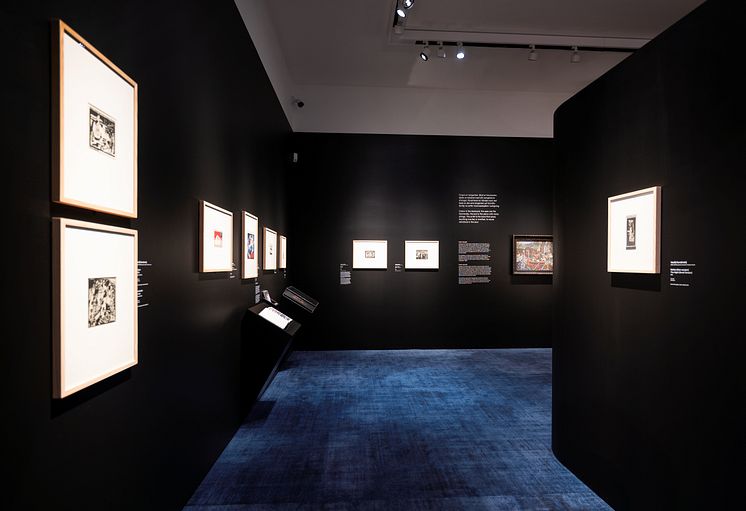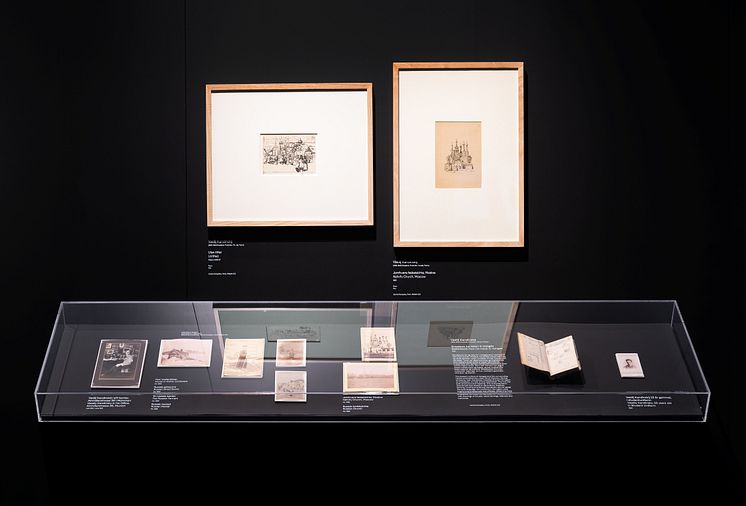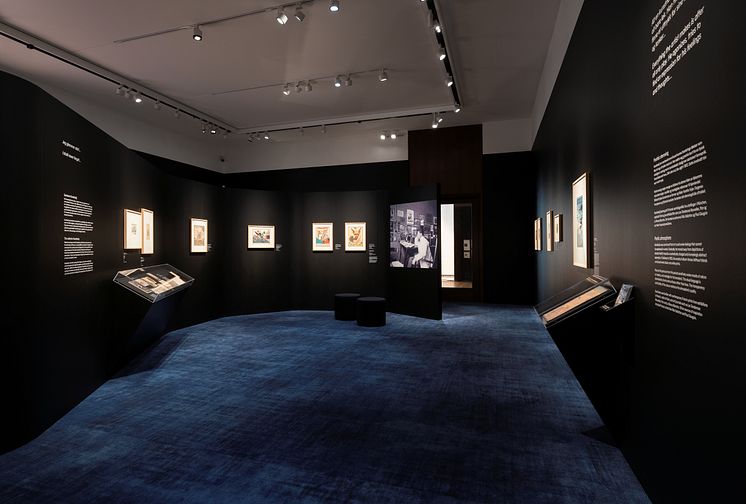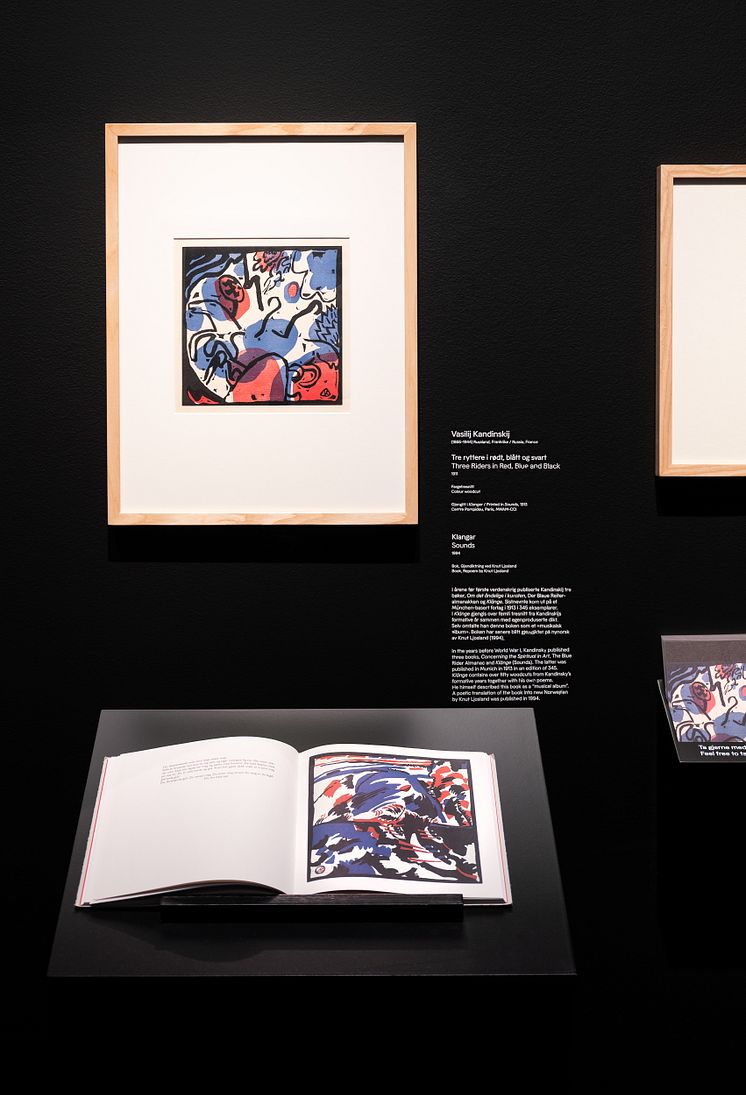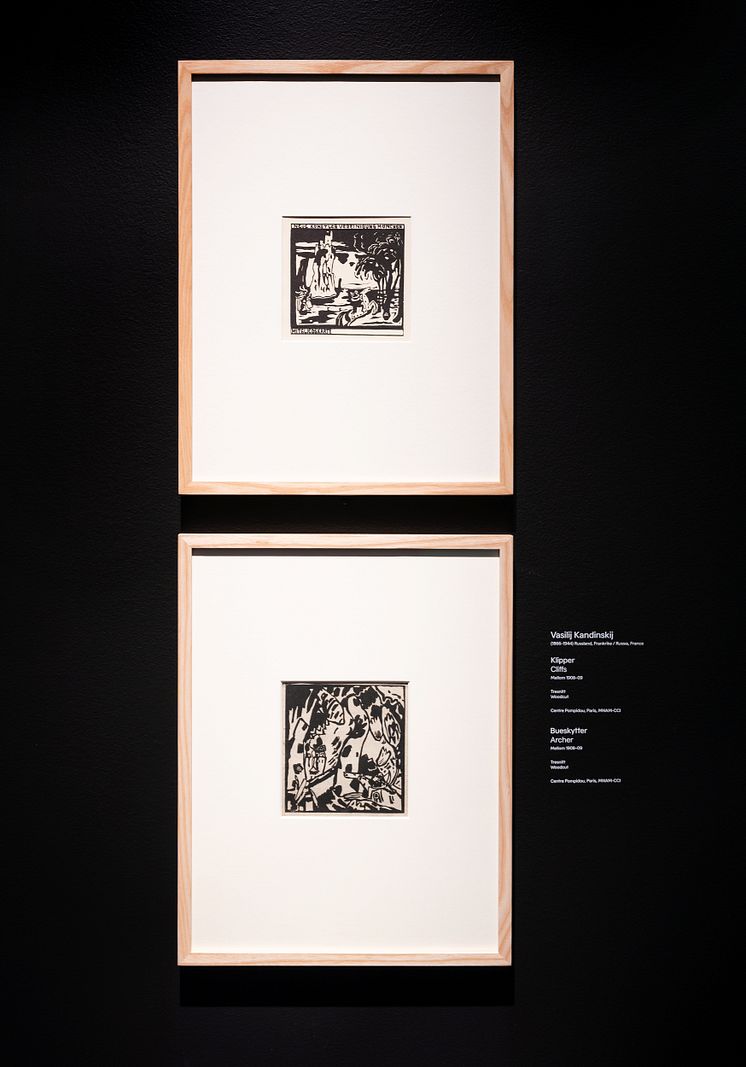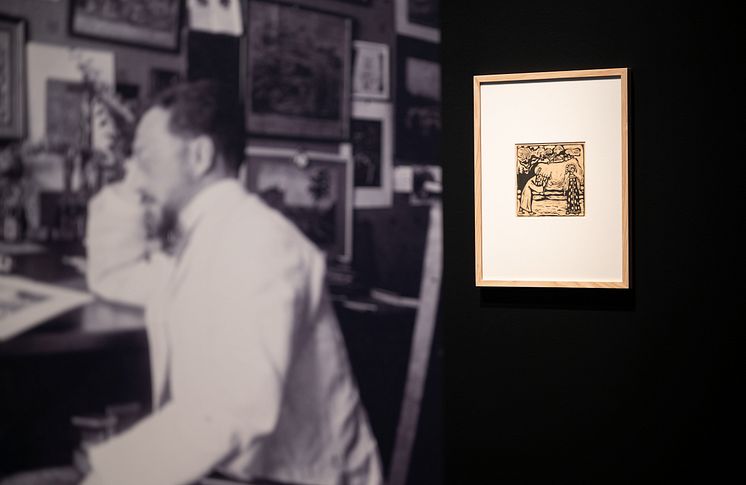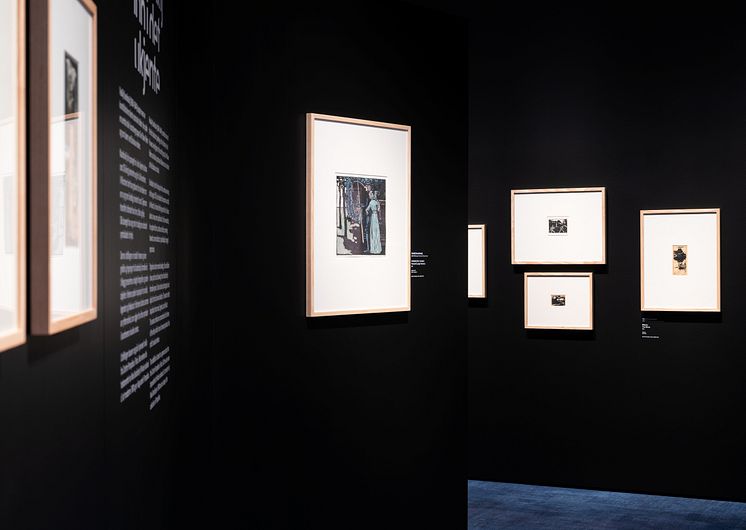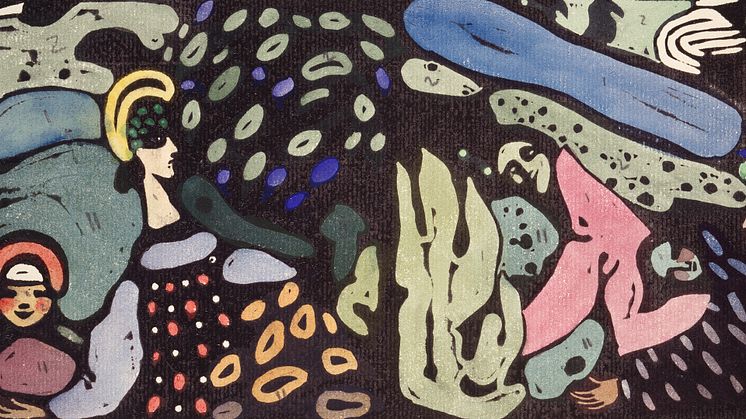
Press release -
A rare opportunity to see Vassily Kandinsky’s early prints and drawings
In a period of political and social upheaval, Kandinsky found fertile ground for his ideas about a new and more spiritual art. These works inspired by music, legends and folk art are exhibited throughout the summer, at the National Museum in Oslo.
Welcome to the press preview on Tuesday 30 April at 11.00.
To attend, please write to birgitte.lie@nasjonalmuseet.no by 12.00 on Monday 29 April.
Present at the press preview: director of the National Museum Ingrid Røynesdal, curator Møyfrid Tveit, and curators of education Karianne Ommundsen and Ingrid Wisløff Aars.
“Kandinsky. Into the Unknown”
The National Museum of Art, Architecture and Design, Oslo
Prints and Drawings Gallery
3 May–18 August 2024
– "Kandinsky. Into the Unknown" follows one of the most important artists of the twentieth century on his path towards abstraction and the expression for which he is best known. It has been nearly seventy years since the last solo exhibition of Kandinsky in Norway, so without doubt this is a major event, says director of the National Museum, Ingrid Røynesdal.
–The exhibition would not have been possible without the excellent collaboration with our colleagues at the Centre Pompidou in Paris.
“Kandinsky. Into the Unknown” brings together forty-four works from 1889–1912, the years that shaped Kandinsky as an artist. These small pictures from the collection of the Centre Pompidou are rarely exhibited. The exhibition also features photographs, folk woodcuts, and icons from the artist’s private collection, and music by the composer Arnold Schoenberg.
It shows various aspects of Kandinsky’s life and work, from his deep connection to his homeland and his interest in folk culture to his role as a pioneer of a new, spiritual art.
When, at the age of thirty, Kandinsky abandoned an academic career and moved to Munich to become an artist, the art scene in Russia was characterised by tradition, realism and figuration. For Kandinsky, the spirituality and renewal he yearned for was lacking in his homeland. In Munich, by contrast, he quickly became part of the avant-garde and a community of artists with links to the Art Nouveau movement and symbolism, trends to which many of his fellow Russian artists in Munich were already committed.
In Germany, he focused on printmaking, and in particular the techniques of wood engraving, woodcut and linocut. These were media that encouraged simplification of surface, form and line. As he explored these techniques, his expression gradually became more symbolically charged and abstract, as the pictures in the National Museum exhibition illustrate.
Contact birgitte.lie@nasjonalmuseet.no for photo material of the works in the exhibition.
About Vassily Kandinsky (1866–1944)
- Born in Moscow in 1866, moved with his parents to Odessa at the age of five.
- Two important events persuaded him to abandon his studies in law and economics in Moscow and to start an art education in Munich: in 1896 he saw Claude Monet’s painting "Haystacks" at an exhibition of French Impressionists in Moscow and he attended a performance of Richard Wagner’s opera "Lohengrin".
- The years that shaped Kandinsky as an artist from 1896 to 1912 were a turbulent era in European and Russian history. The power of the tsar and the church were crumbling under pressure from a society riven by great social and economic differences. Kandinsky withdrew into art, where he found a kind of spiritual anchor in the chaos of modern life.
- In 1901, Kandinsky establishes “Phalanx”, an artists group that organises exhibitions with works by, among others, Akseli Gallen-Kallela, Vincent van Gogh, Félix Vallotton and Henri de Toulouse-Lautrec.
- In 1912, together with Franz Marc, Kandinsky forms “Der Blaue Reiter” (The Blue Rider), a group of German expressionist artists, helping to establish his reputation as one of the great artists of his day.
- Kandinsky teaches at the renowned Bauhaus school of architecture, design and crafts from 1922 until its closure by the Nazis in 1933.
- Kandinsky moves to Paris. In 1939, he becomes a French citizen and spends the rest of his life in France. He dies in 1944 at Neuilly-sur-Seine, outside Paris.
- Publications: "Der Blaue Reiter Almanach" ("The Blue Rider Almanac"), 1912; "Über das Geistige in der Kunst" ("On the Spiritual in Art"), 1912; "Klänge" ("Sounds"), 1913.
- Exhibitions in Norway: 1958, Kunstnernes Hus: Kandinsky. Painting from 1903–44, from The Solomon Guggenheim Museum, New York. 1916, Blomqvist: Wassily Kandinsky and Gabriele Münter, Paintings. 1914, Blomqvist: Paintings, works of significant abstraction from 1911–12. Group exhibition with Franz Marc, August Macke, Gabriele Münter, Paul Klee and others.
This summer’s exhibition programme at the National Museum
“Britta Marakatt-Labba. Moving the Needle”
15 March–25 August
The Light Hall
“Kandinsky. Into the Unknown”
3 May–18 August
Prints and drawings gallery
2nd Floor
“Mark Rothko. Paintings on Paper”
16 May–22 September
The Light Hall
“Becoming Anna-Eva Bergman”
14 June–24 November
The Light Hall
Topics
The National Museum of Art, Architecture and Design is the largest art museum in the Nordics. The collection contains 400,000 objects ranging from the antiquity to the present day and includes paintings, sculpture, drawings, textiles, furniture and architectural models. The new museum building opened in June 2022. At the National Museum visitors can experience a comprehensive Collection presentation of around 6,500 works, as well as a varied programme of temporary exhibitions and events.



